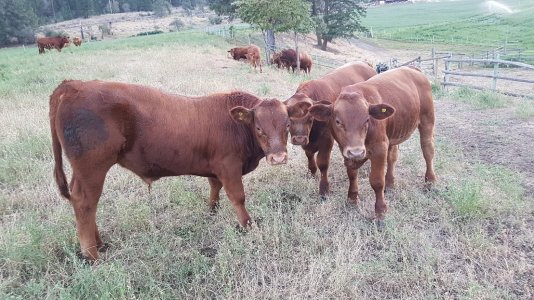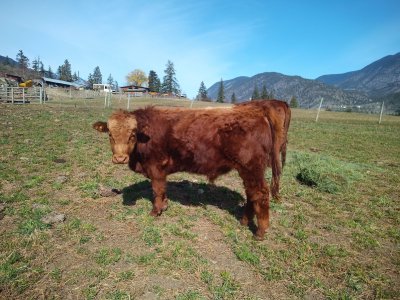He looks good! I haven't regretted experimenting with linebreeding, not everything has been positive, I have never had a good calf from a father/daughter or a mother/son mating, but have had exceptional cows from full siblings and cousins so I'll continue on that.. I have too small a herd to be completely closed, but using one or two of my own, saving some money, and putting it toward an outcross bull that's a little more expensive has worked for me so far
I kept 3 boys intact last year, and went through phases of liking different ones over others.. Here's the 3 of them, all from the same sire (an ourcross sire) middle and left one are from a pair of full sisters, the one on the the right from about a 7/8th sister
left one packed the most weight, would probably be good to increase milk but at the cost of probably being a harder keeper, also had the most length, one on the right was deepest and thickest (used a maternal brother to him), and the one in the middle was what I think was a balance between them.

Never seen any grain, a little more feed would definitely round him out, but this is him now

Momma, she's been a really reliable cow






